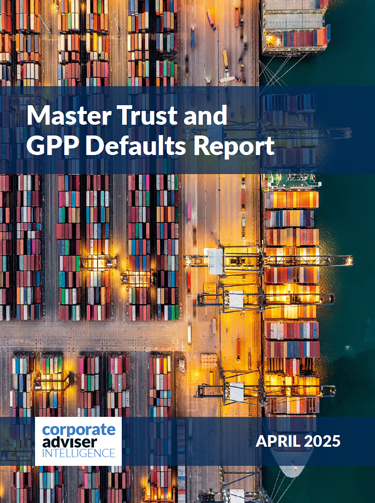Prioritising prevention over treatment is a key part of the government’s plans to reform the NHS. But, with prevention already on the workplace health agenda, organisations’ experiences could help shape policy.
All sorts of products are now available that focus on prevention by driving healthier behaviours. “Insurers have really upped their game,” says Jo Tressler, director of employee benefits at Clear Group. “There’s been a massive shift from treating the problem to addressing it through prevention.”
The drive to push prevention is seen across the medical insurance sector but also in group risk, with providers now offering everything from digital GP services and health apps through to employee assistance programmes and counselling. Katharine Moxham, spokesperson for Group Risk Development (Grid), says this is largely where the group risk market competes. “Long-gone are the days when these were merely financial payment products. Employers should take full advantage of what comes along with their policy,” she adds.
Prevention pitfalls
Having all the tools to support prevention is a bonus but it takes more to successfully drive change. Significant commitment and a well-thought-out strategy are a must.
For starters, targeting behaviour change across the workforce is difficult. “A wellbeing strategy might only hit those who are already taking steps to improve their health,” explains Allyson Gayle, director (risk and healthcare) at Isio, pointing at the gym bunnies taking advantage of cheaper membership as an example. “Any prevention strategy must be sustained to reach those employees who would benefit most from change.”
Employers also need to overcome cynicism. Although employees increasingly expect their employers to do more to look after their health, there are fears around confidentiality and whether a poor health status could catapult them to the top of the redundancy list.
It’s also notoriously difficult to change behaviours. Millions of us bound into the new year with good intentions but these resolutions rarely last more than a week, with so-called Quitter’s Day falling around the 10th January.
This is partly because results take time. “Improvements in diet and exercise are the most effective health interventions,” says Gayle. “But as results take time, they can be hard to sustain.”
Short-term buzz
The long-term benefits of a prevention strategy may feel out of reach, but Dr Katie Tryon, director of health strategy at Vitality, says there are plenty of short-term wins for employees to focus on. “It’s incredibly important to prevent chronic conditions but it does take time, which is why we offer incentives to help people stay motivated,” she says. “But there are some significant impacts early on too. Someone giving up smoking will cut their risk of developing lung cancer in the future but will start to feel better in the short-term.”
According to NHS data, anyone stopping smoking can expect results including easier breathing, higher energy levels and improved circulation within the first few weeks. Stop for a year, and they’ll also enjoy fewer coughs and colds and halve their risk of heart attack.
Some prevention strategies are even more skewed to immediate results. Dr Tryon says this is particularly the case with mental health and obesity interventions. “A lot of people would describe themselves as having poor mental health but it’s easy to change the dynamics so they feel better and avoid chronic issues. Similarly, people can see health benefits quickly if they stick to a weight loss programme,” she explains.
Employer positives
Employers are also likely to reap some benefits of a prevention strategy in the short-term. Healthier employees take less time off sick and are more productive. “Organisations can see sickness absence and presenteeism reduce, while productivity and engagement increase,” explains Dr Tryon.
A healthier workforce can also make it easier to manage employee benefit spend, even where the employer is paying for health prevention interventions. “If employees are taking a vested interest in their health, management information will improve. This can be used to support a rebroking exercise and make pricing more sustainable,” explains Gayle.
The potential rewards mean it pays to tailor a prevention strategy to the workforce. “An employer’s strategy needs to be very flexible,” says Debra Clark, head of wellbeing at Towergate Employee Benefits. “It needs to adapt to the needs of the workforce but also what’s happening in the world.”
Data driven decisions
Understanding the employee population is key to designing a wellbeing strategy that engages them and fosters change. As well as liaising with any employee networks or wellbeing champions, Clark recommends using tools such as surveys, questionnaires, and health risk assessments to find out what employees want. “This can highlight common risks across the workforce but could also prompt employees into action,” she adds.
Health screenings and simple blood tests can help to bring the data – and the risks – to life. While an executive health screen can be anything from £300 to £1,500 plus, a finger prick blood test can cost less than £5 per employee. “These can be a bit of a disturber,” says Gayle. “Employees can see health issues early and make changes to prevent them getting worse. It works particularly well when it’s rolled out across the whole workforce.”
Employers also stand to benefit from any data gathering exercise. “The employer gets great management information from these initiatives,” says Dr Tryon. “This can be used to understand and target the challenges.”
Making it work
Although every workforce’s data will be unique, all organisations will require a diverse range of interventions to support their preventative healthcare strategy. Even something as simple as being more active is open to a broad range of interpretations, from a weekly walking meeting or onsite yoga class through to a workplace running club training for a charity 10k.
“Create choice and flexibility,” says Gayle. “Employers also need to consider the diversity of the workforce. If there’s a large population of baby boomers, they might want very different interventions to millennials or
Gen Z.”
It’s also important to provide trusted interventions, especially as the world of health and wellbeing is awash with snake oil. “Look for evidence-based solutions,” says Dr Tryon. “And review what’s on offer regularly. If something isn’t working, change it.”
A robust communications programme is also essential. Clark recommends using a variety of different methods, from webinars and emails to awareness days and competitions.
Linking to case studies and celebrity news can amplify messages. “Whether it’s Davina McCall and the menopause or Sir Chris Hoy and prostate cancer, people feel they know them and they listen,” adds Clark.
Maximising value
Finding employee advocates, whether that’s a wellbeing champion or a keen runner or walker to set up a club, can also help. Similarly, line manager training on all the health and wellbeing initiatives creates another channel for promotion.
The broader organisation has a part to play too, as Tressler explains: “Having the right workplace culture reinforces a health and wellbeing strategy. Simple steps like fruit in the office, volunteer days and regular social events will engage employees more.”
And, while it’s possible to create change on a tiny budget, using existing benefits and added value services, demonstrating return on investment is invaluable. Monetising success can be notoriously difficult, especially for long-term health improvements, but again, data is the key.
Change can be seen in all sorts of metrics from sickness absence and employee engagement through to claims and costs on health insurances. Transforming these health improvements into bottom line benefits can create the necessary buzz and support at board level.





